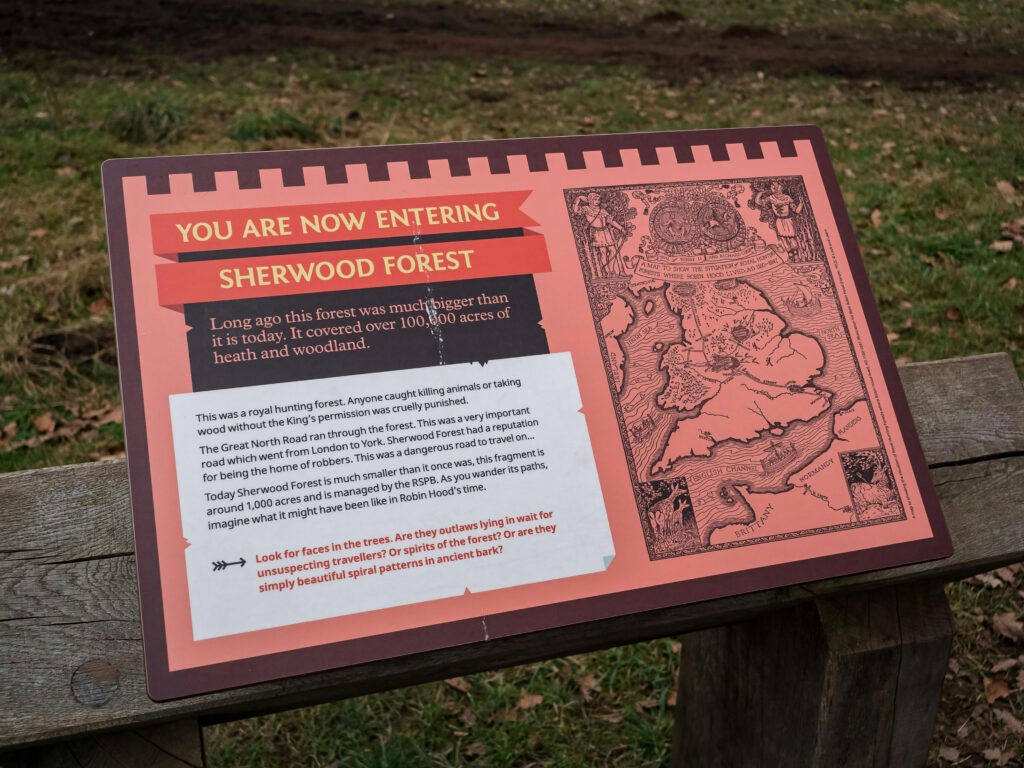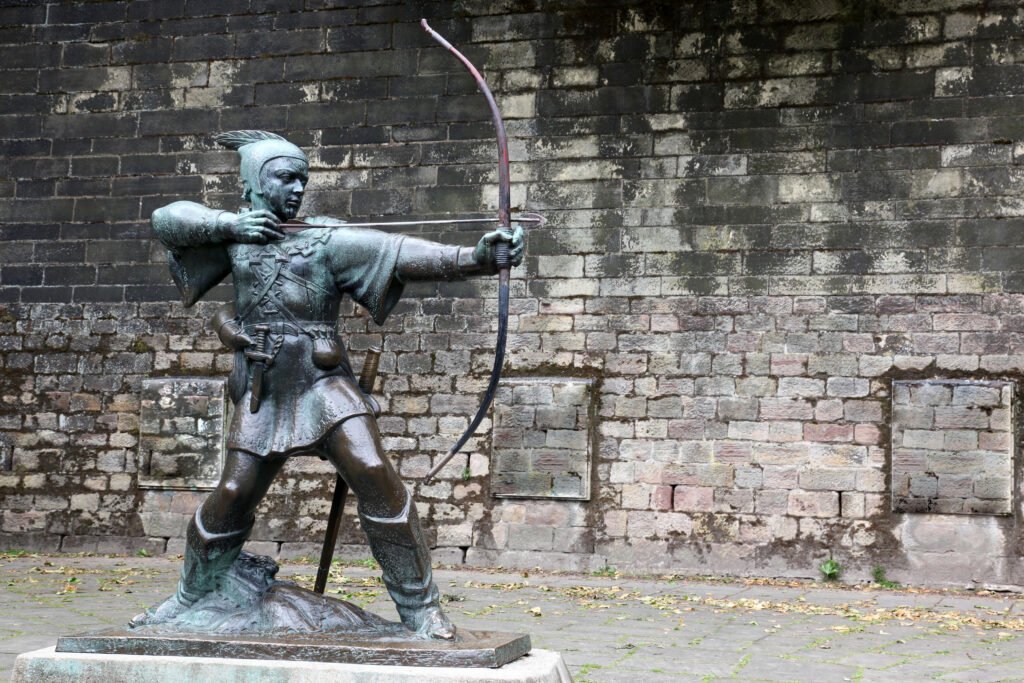The Legend of Robin Hood: Its Impact on Nottinghamshire's Culture and Tourism
The legend of Robin Hood is deeply rooted in English folklore, with origins tracing back to the medieval period. This legendary figure is often depicted as a skilled archer and swordsman, embodying the traits of a hero who steals from the rich to give to the poor. The tales surrounding Robin Hood have evolved over centuries, influenced by historical events, societal changes, and the artistic interpretations of various writers. As such, the narrative exhibits a remarkable variety, with numerous versions and adaptations emerging over time.
The historical context of the Robin Hood legend is essential in understanding its enduring appeal. Often associated with the late 12th century during the reign of King Richard the Lionheart, the stories reflect a time of turmoil and the struggles faced by the common people. Robin, as a character, symbolizes the fight against injustice and oppression, resonating with themes of social equity and rebellion against tyranny. These motifs have continued to captivate audiences, making the legend relevant in different eras and cultures.
Several key figures populate the world of Robin Hood, each contributing their unique perspectives to the narrative. Little John, Robin's loyal companion, highlights the element of friendship and camaraderie, while Maid Marian represents the idealized notion of love and virtue. The Sheriff of Nottingham often serves as the antagonist, embodying corruption and authority, which Robin stands against. The interplay between these characters enhances the complexity of the story, allowing for various interpretations and adaptations across literature, film, and popular media.
Through its various retellings, the legend of Robin Hood has transcended time, continuing to inspire and entertain. Its themes of justice, loyalty, and resistance against oppression remain pertinent today, ensuring that this iconic figure continues to impact culture and tourism, particularly in Nottinghamshire, where his legend originated.
Historical Background and Evolution
The legend of Robin Hood has deep historical roots, with some of the earliest references dating back to the 13th century. This elusive figure emerged within the rich tapestry of English folklore, capturing the imagination of the public as a noble outlaw who stole from the rich to give to the poor. Many of the earliest ballads highlighting the exploits of Robin Hood depict him as a hero of the common people, an embodiment of justice in a time when social inequality was rampant. The evolving narrative surrounding Robin Hood reflects broader social changes, as each retelling resonates with the contemporary issues faced by society.
During the 15th century, Robin Hood's image began to solidify in written literature, particularly with the appearance of the ballad "Robin Hood and the Monk." This specific piece was pivotal, showcasing not only the character’s valiant deeds but also the growing complexity of his persona. As centuries passed, various adaptations introduced new dimensions to Robin Hood's story, from the portrayal of his band of Merry Men, including the famous Little John and Friar Tuck, to the romanticized relationship with Maid Marian. The character’s depiction transformed Robin from a mere folk hero into a symbol of rebellion, emphasizing themes of justice and equality.
In the 20th century, Robin Hood transitioned further into popular culture through film and television, with notable adaptations like the 1938 classic "The Adventures of Robin Hood" and the animated "Robin Hood" from Disney in 1973. These portrayals further broadened his appeal, ingraining the legend deeply into the cultural fabric of Nottinghamshire and beyond. The adaptability of Robin Hood’s narrative to various media—literature, film, stage—is a testament to his enduring legacy, underscoring his significance as a cultural icon that continues to inspire discussions about justice and morality.
The Connection Between Robin Hood and Nottinghamshire
The legend of Robin Hood is intricately linked to Nottinghamshire, a county in England renowned for its rich folklore and natural beauty. At the heart of this mythology lies Sherwood Forest, a vast expanse of woodland that has captivated the imaginations of many for centuries. Historically, Sherwood Forest served as a royal hunting ground, where Robin Hood and his band of Merry Men are said to have engaged in acts of heroism against the unjust authorities of the time.
Nottingham Castle also plays a pivotal role in the Robin Hood narrative. The castle is often depicted as the stronghold of the Sheriff of Nottingham, Robin's archenemy. This connection has turned the castle into a significant cultural landmark, drawing visitors who wish to explore its historical relevance. The castle's imposing structure and location provide a tangible link to the tales of Robin Hood, enriching the tourist experience with its storied past and association with folklore.
The geography of Nottinghamshire is dotted with various locations that contribute to the Robin Hood legend. From the iconic Major Oak in Sherwood Forest—believed to be the hiding place for Robin and his men—to the quaint towns that celebrate his story, each site serves as a reminder of the enduring legacy of this folk hero. These landmarks not only preserve the myth but also attract thousands of tourists each year, further intertwining Robin Hood with the identity of Nottinghamshire.
Moreover, the cultural significance of Robin Hood extends beyond these locations, influencing local festivals, literature, and various forms of media. The integration of these geographical ties into Nottinghamshire’s tourism strategy underscores the region’s commitment to celebrating its heritage while inviting visitors to explore the trails and attractions that breathe life into the legend of Robin Hood.
Tourism Growth Fueled by the Robin Hood Legend
The legend of Robin Hood has long been a powerful catalyst for tourism in Nottinghamshire, attracting countless visitors seeking to immerse themselves in the rich tapestry of folklore associated with the famous outlaw. Over the years, various statistics have illustrated the remarkable impact this legend has had on the region. For instance, recent studies indicate that Nottinghamshire receives over two million visitors annually, with a significant percentage specifically drawn to sites related to the Robin Hood narrative.
This influx of tourism has resulted in the development of a diverse array of attractions. Visitors can explore Sherwood Forest, renowned as Robin Hood's legendary hideout, where they can indulge in nature walks while learning about the history and cultural significance of the area. In addition, the creation of themed parks such as the Sherwood Forest Visitor Centre has enhanced the experience, offering interactive displays and guided tours that complement the lore of the beloved character.
Local businesses have adeptly adapted to capitalize on the popularity of the Robin Hood legend. Souvenir shops featuring Robin Hood merchandise, traditional pubs offering themed menus, and local restaurants serving hearty meals reminiscent of the medieval era have flourished. Tour guides specializing in Robin Hood-themed experiences have emerged, providing insights into the history of the character and the socio-political context of the time. Such adaptations highlight the symbiotic relationship between the folklore and local economies.
The Robin Hood legend continues to inspire local festivals and events that celebrate this iconic figure. Whether through reenactments, music festivals, or storytelling sessions, these events not only bolster tourism but also foster a sense of community pride. Thus, the enduring legend of Robin Hood remains a cornerstone of Nottinghamshire's tourism landscape, significantly influencing both cultural identity and economic growth in the region.
Annual Celebrations and Events
Nottinghamshire, the legendary backdrop of Robin Hood's adventures, hosts a variety of annual celebrations and events that pay homage to this iconic figure. These festivities not only celebrate the folklore surrounding Robin Hood but also serve to cultivate a sense of local pride and community spirit. One of the most prominent events is the Robin Hood Festival, held each August in Sherwood Forest. This week-long festival features historical reenactments, archery competitions, and traditional music, offering immersive experiences for attendees. In this vibrant atmosphere, visitors can witness firsthand the tales of Robin Hood come to life, enriching their understanding of the cultural significance surrounding this legendary character.
Another important event is the annual Nottingham Castle Robin Hood Experience. This event invites families and history enthusiasts alike to explore the majestic Nottingham Castle while engaging in activities that reflect Robin Hood's story. From guided tours narrated through the eyes of the illustrious outlaw to interactive exhibits showcasing artifacts related to the legend, this experience solidifies Nottingham's claim as the heart of Robin Hood's lore. Furthermore, the local community frequently organizes themed parades on special occasions, whereby participants dress as characters from the tales, thereby deepening the connection to this enduring narrative.
The impact of these celebrations extends beyond mere entertainment, as they significantly contribute to Nottinghamshire's tourism sector. Visitors flock to the region not only to celebrate Robin Hood but also to enjoy the scenic beauty of its landscapes and historical sites. Such events create a vibrant ecosystem where local businesses thrive on the influx of tourists, further entwining the legend of Robin Hood with the contemporary culture of Nottinghamshire. Therefore, these annual celebrations serve as a critical link between the historical narrative and the economic vitality of the region, reflecting the timeless appeal of the noble thief and his adventures.


